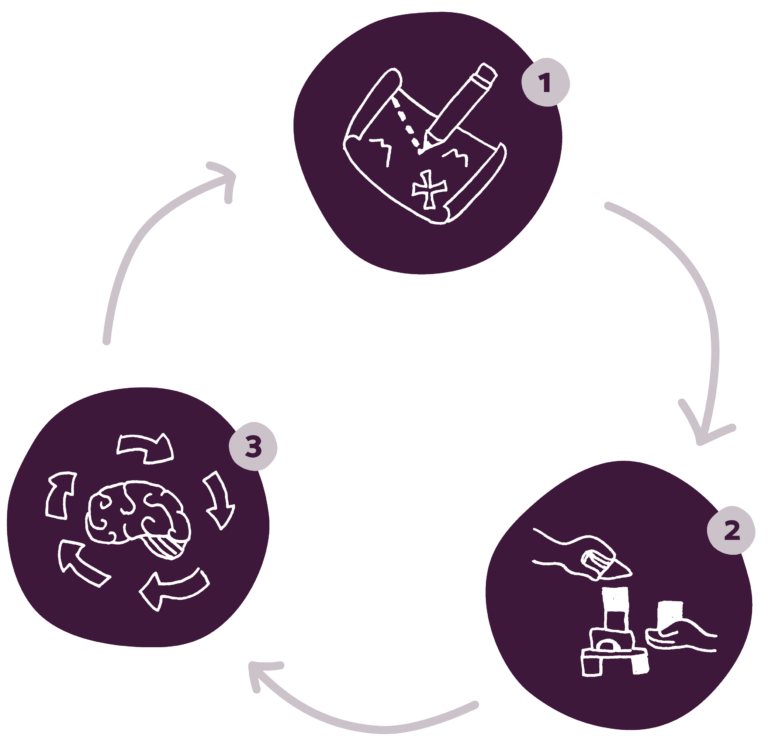Design a Learning Session
We want to help you get started with designing and trying out a playful learning session for one or more of your school children. The goal is to create a playful learning session that motivates the children to engage in and reflect on their learning together. It can be difficult at first and requires some experience, so go for it. You only need knowledge about the children and the will to try.

Preparation
During the preparation, we ask ourselves: What do we hope that the children discover?
We set up a learning goal, a focus, a hypothesis, or a challenge that lies within the children’s zone of proximal development.
Pretty much all play activities and reflection routines can be adapted to any social learning goal. The art is to design the play and the reflection in such a way that the children have opportunities to make their own discoveries in relation to the learning objective.
The preparation is also very much about framework that is vital for creating a feeling of safety and meaning in the learning environment. Every play activity has a suggestion for a framework that can inspire you. Remember that all children benefit from knowing: What? Where? How? Why?
You can use the preparation sheet or be inspired by the questions therein.
Play and Reflection
The depth of learning depends on the child’s attention and engagement, which is why we play. The play activities are a means for the children to gain social experiences, which can be made the subject of reflection.
We scaffold the learning process and deepen the learning through reflection routines. Many children benefit from social discoveries being made concrete and visible, and the children themselves can also be involved in this.
The reflection routines are always based on the children’s experiences and discoveries from the play situation.
Perhaps the children made completely different discoveries than what you expected, and that is only beautiful. We succeed when the child has been engaged and has reflected on his or her learning together with others.
Professional Considerations
An engaging and reflective learning environment does not evolve by itself. This requires us to reflect professionally after the play session: What did I see? What do we take with us next time? What should be done differently next time?
For our considerations, we can use the reflection routines as our documentation and starting point. On that basis, we can adjust the learning focus and the play activity, so that the children have the opportunity to work on their discoveries and initiatives in the next play session.
Working systematically with our professional considerations is a way of following the learning outcomes and development of the learning process and the children.
You can find inspiration for professional considerations in the evaluation sheet.
Your Professional Role
As an educator, you are a facilitator of the play and the reflection. This means that you structure the learning session so that the children’s learning is discreetly directed towards a learning focus. During the play activity, you facilitate the children’s learning by using reflection routines or asking curious questions about what is happening, so that the children become aware of the learning objective. Most importantly, you use what the children do as a starting point rather than instructing how the play should take place. Instead of being the omniscient captain, you can consider yourself a curious facilitator who, like the children, explores and experiments with playful learning sessions.
A Circular Process
When designing a playful learning session, you can consider it as a circular process. Your preparation for the first session is only the first attempt to create a playful learning environment. When you then try out the play and the reflection with the children, you can observe and document whether it succeeds. Subsequently, your professional reflections on the session enables you to adjust, so that, in the next preparation, you have a new baseline for planning a playful learning session for your pupils’ exact learning needs. Thus, you can continuously test and improve the playful learning sessions, so over time, a playful learning environment that motivates and is meaningful for your pupils is created.